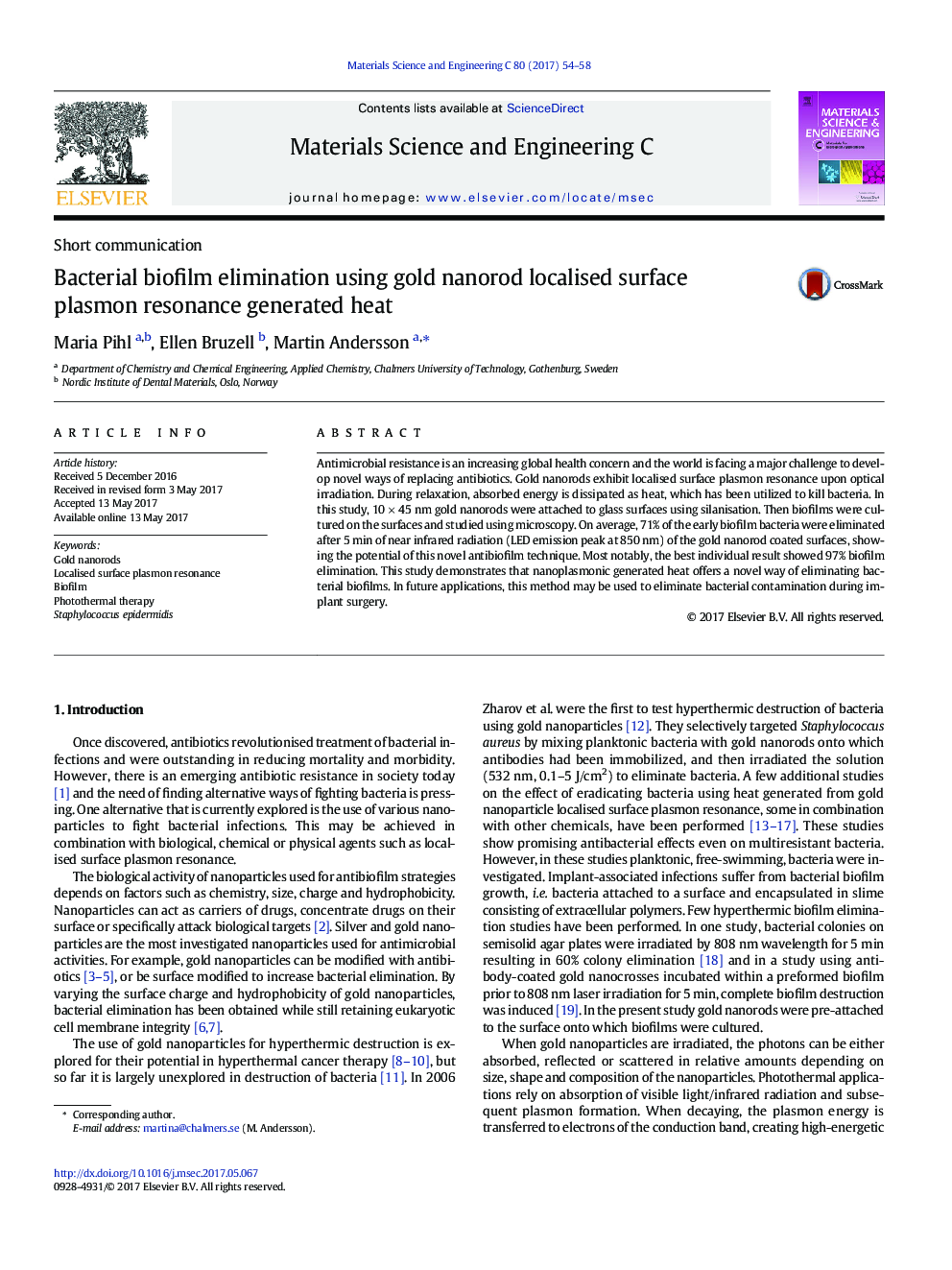| Article ID | Journal | Published Year | Pages | File Type |
|---|---|---|---|---|
| 5434372 | Materials Science and Engineering: C | 2017 | 5 Pages |
â¢A technique for antibiotic replacement using heat for biofilm elimination is proposed.â¢Gold nanorods exhibit localised surface plasmon resonance upon optical irradiation, which is utilized to kill bacteria.â¢After 5 minutes of near infrared irradiation an average of 71% of early biofilms were eliminated.
Antimicrobial resistance is an increasing global health concern and the world is facing a major challenge to develop novel ways of replacing antibiotics. Gold nanorods exhibit localised surface plasmon resonance upon optical irradiation. During relaxation, absorbed energy is dissipated as heat, which has been utilized to kill bacteria. In this study, 10Â ÃÂ 45Â nm gold nanorods were attached to glass surfaces using silanisation. Then biofilms were cultured on the surfaces and studied using microscopy. On average, 71% of the early biofilm bacteria were eliminated after 5Â min of near infrared radiation (LED emission peak at 850Â nm) of the gold nanorod coated surfaces, showing the potential of this novel antibiofilm technique. Most notably, the best individual result showed 97% biofilm elimination. This study demonstrates that nanoplasmonic generated heat offers a novel way of eliminating bacterial biofilms. In future applications, this method may be used to eliminate bacterial contamination during implant surgery.
Graphical abstractDownload high-res image (136KB)Download full-size image
